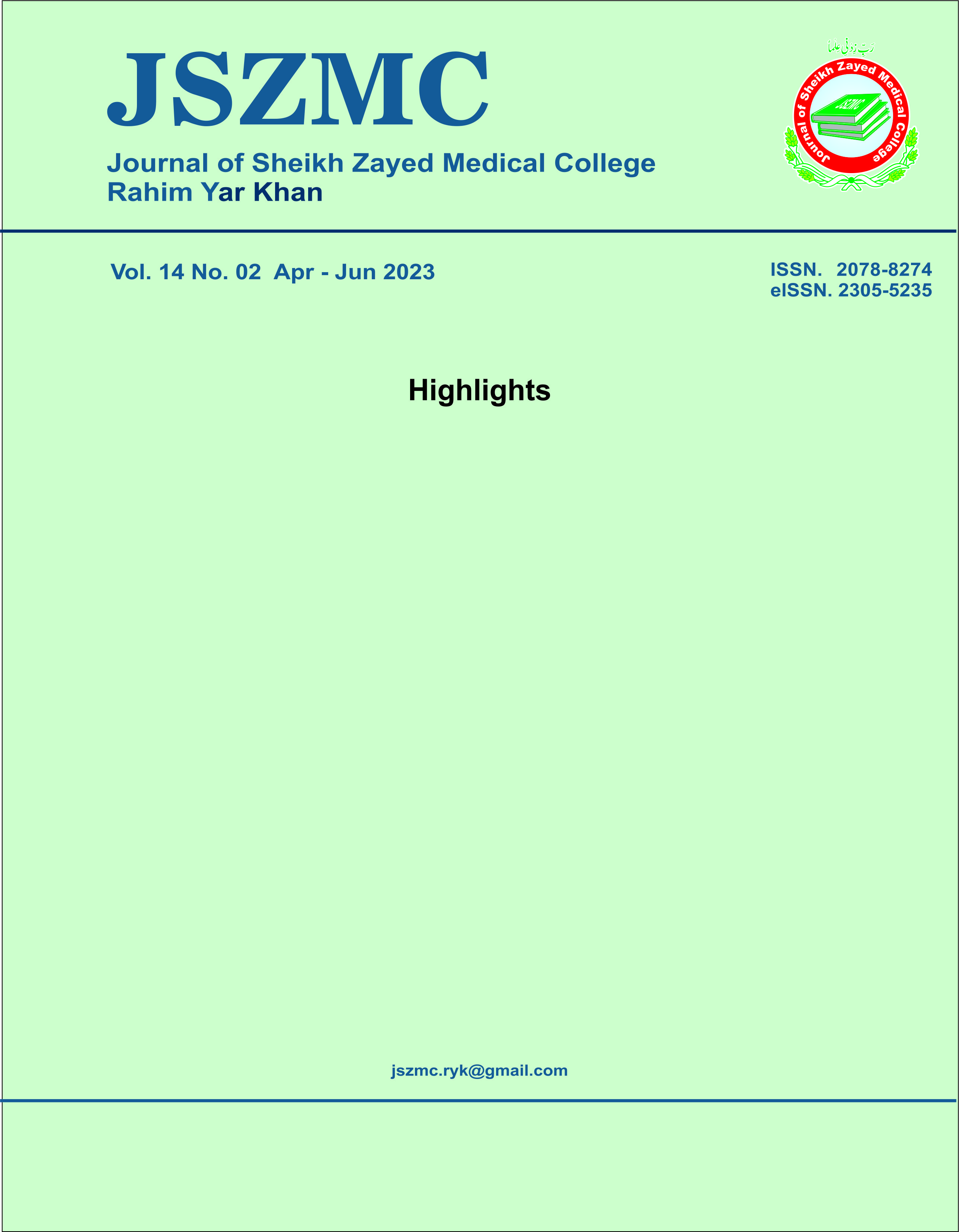Communication: The Life Line of Healthcare
DOI:
https://doi.org/10.47883/jszmc.v14i4.305Keywords:
Effective Communication, Patient Care, Active ListeningAbstract
Effective communication is not just a skill; it's a lifeline for quality patient care. Communication skills can be defined as the ability to convey information, thoughts, and feelings in a clear, concise, and respectful manner. Communication skills can be divided into verbal and non-verbal skills. Verbal skills include the use of words, tone and pitch to express oneself, while non-verbal skills include the use of body language, facial expressions and eye contact to convey messages. Effective communication is pivotal in linking both health professionals and patients psychologically. It enhances patient satisfaction, adherence, and outcomes, while also promoting patient-centered care and shared decision-making by allowing professionals to understand the patient's needs, preferences, and values. Moreover, it facilitates addressing the emotional and ethical challenges of healthcare, such as delivering difficult news, managing difficult patients, and handling conflicts.
The Joint Commission identifies communication gaps as the leading root cause of sentinel events.1 Examples encompass a spectrum of occurrences, including unexpected deaths, wrong-site surgeries, transmission of diseases, infant-related incidents, workplace violence, and various other events that trigger the need for thorough review and corrective action. Poor communication can lead to errors, misunderstandings, delays, and conflicts among health care providers, patients, and families. To prevent sentinel events caused by poor communication, health care organizations and professionals should implement strategies and tools to improve communication skills and processes, such as standardized hand-off protocols, checklists, electronic health records, team training, and patient engagement.
The common communication challenges and shortcomings, include the following: inadequate handovers or transitions of care, poor discharge planning and ambiguous patient instructions, language barrier, cultural barriers and misunderstandings and errors in test results. These challenges mentioned are effectively addressed by the standards set by the Joint Commission International, which are based on evidence-based best practices.1 These standards aim to enhance communication in healthcare, leading to improved patient outcomes. Healthcare professionals, encompassing doctors, nurses, paramedics, and other members of the medical team, must possess exemplary communication skills to ensure optimal patient care, foster collaboration among colleagues, and cultivate a positive healthcare environment. Effective communication is fundamental in healthcare, serving as a crucial link between patients and healthcare systems. Recognizing the benefits and addressing systemic barriers to efficient communication is vital, requiring intervention at both the individual and organizational levels.
Healthcare managers recognize that effective communication starts with the ability to listen effectively. Often, communication issues occur because we focus on responding rather than understanding the message being conveyed. Communication involves the exchange of information between a sender and a receiver through verbal, written, or nonverbal means. A significant portion of our listening is focused on vocal features and non-verbal signals. Specifically, around one-third of our listening is dedicated to vocal features such as volume, pitch, pace, and pause, while almost half is focused on non-verbal signals like facial expressions, eye contact, gestures, body movements, and space/distance. Surprisingly, only one-fifth of our listening is focused on the actual spoken words, and people only hear around one-third of the overall message. Nonverbal communication plays a significant role in interactions, encompassing body language, touch, and moments of silence. Listening is an integral part of effective communication. Active listening, characterized by empathy, acceptance, and genuine interest, is a fundamental aspect of professional interaction.2 The use of open body language, paraphrasing, effective questioning skills, and giving undivided attention are crucial components of active listening. Use active listening skills, such as paraphrasing, reflecting, and summarizing, to show interest and understanding of the patient’s perspective. Asking open ended questions will create a space for patients to express their feelings. Use clear and simple language, avoiding jargon, acronyms, and technical terms, to ensure the patient understands the information and instructions. Use non-verbal cues, such as maintaining eye contact, nodding, and smiling, to show attentiveness and respect. Use feedback, such as asking the patient to repeat or demonstrate what they have learned, to check for comprehension and correct any misunderstandings.
Seeking feedback can help uncover gaps in communication and highlight areas that need improvement. It is essential for every individual to comprehend the medical care they receive. Ensuring effective communication for all patients, healthcare organizations should employ interpreters as needed to uphold the basic right of every patient to be heard and understood. There is evidence that indicate the patient perceives the interaction more trustworthy when the healthcare provider and patients both are seated.3 Effective communication is essential for establishing trust and rapport between health professionals and patients. It enhances patient satisfaction, adherence, and outcomes. A breakdown in communication among healthcare professionals can result in compromised patient outcomes. Conversely, a cohesive team that communicates seamlessly shares insights, coordinates care plans, and collectively contributes to comprehensive patient management. Beyond patient care, communication skills are instrumental in addressing the broader public health landscape like dispelling misinformation, promoting preventive measures, and encouraging public cooperation with health guidelines.
Every individual has the right to understand the medical care they receive. Providers can create an environment where patients feel comfortable voicing concerns by actively inviting further discussion and using techniques like the "BATHE" approach: Background: Inquire about the patient's present situation. Affect: Explore the emotional impact of their health concern. Trouble: Discuss the patient's worries or anticipated obstacles. Handling: Examine how the patient is coping with the situation. Healthcare professionals, including doctors, nurses, paramedics, and support staff, must show evidence based communication skills to ensure a quality patient care to create a efficient healthcare environment. Four important rules emphasize understanding before seeking to be understood, being non-judgmental, giving undivided attention, and using silence effectively.


